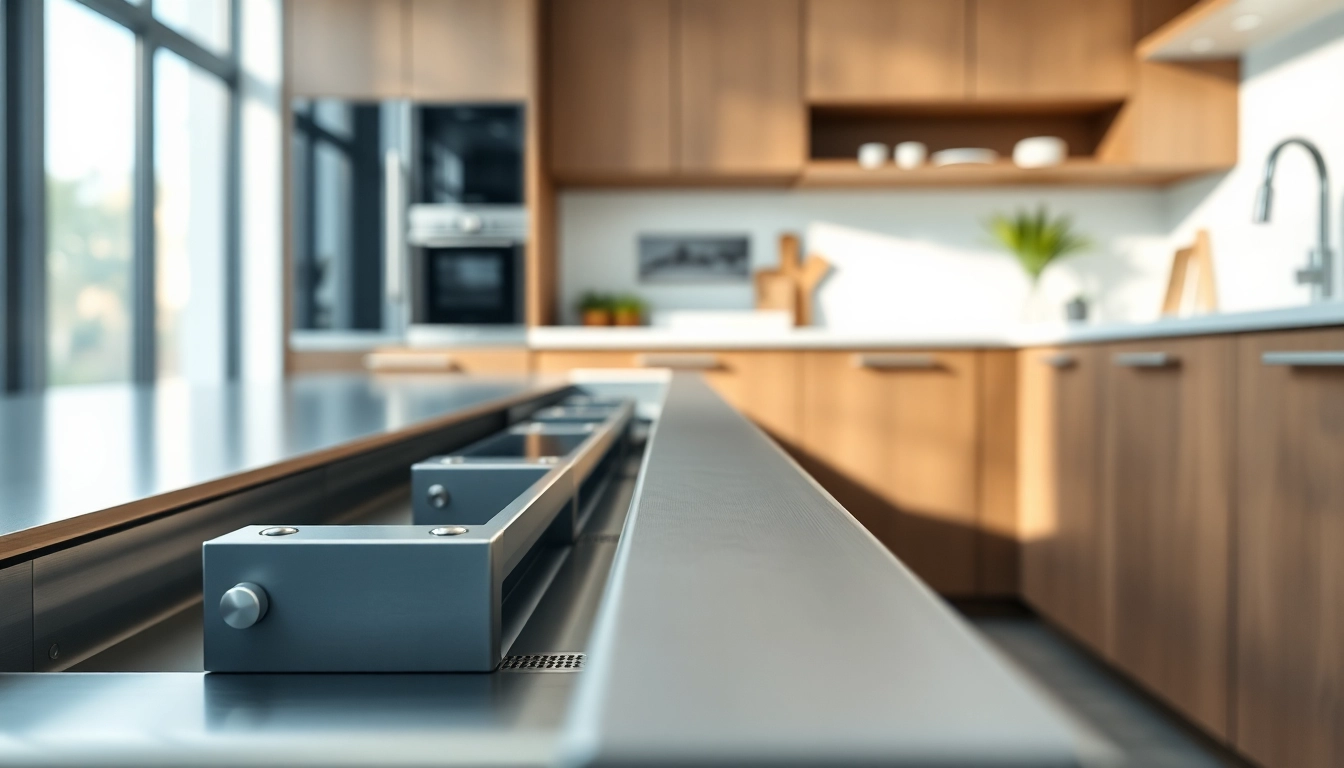Understanding Metal Drawer Systems
What is a Metal Drawer System?
A Metal Drawer System is a robust and efficiently designed solution for storage that utilizes metal components to construct drawers. These systems are integral to modern cabinetry and furniture, providing enhanced durability and functionality compared to traditional wooden drawers. Constructed from materials like steel or aluminum, metal drawer systems are known for their resilience and capacity to handle heavier loads, making them suitable for varied applications, from residential settings to commercial environments.
Key Features and Benefits
Metal drawer systems possess numerous advantages that set them apart from other drawer types. Here are some key features:
- Durability: Metal drawers are resistant to wear and tear, providing a longer lifespan than wooden counterparts.
- Load Capacity: They can support significant weight, often allowing for a greater storage capacity.
- Design Flexibility: Available in various finishes and styles, metal drawers can fit any décor.
- Easy Maintenance: Cleaning metal is convenient, often requiring only a damp cloth to remove dust and grime.
- Efficient Glide Mechanism: Many metal drawer systems feature ball-bearing slides that ensure smooth opening and closing motions.
Types of Metal Drawer Systems Available
There are several types of metal drawer systems, each offering unique advantages suitable for specific applications:
- Side-Mounted Drawer Slides: Installed on the sides of the drawer, allowing for easy access to the entire interior of the drawer.
- Under-Mount Drawer Slides: Positioned beneath the drawer box, providing a cleaner look and allowing for full-access design.
- Heavy-Duty Drawer Systems: Designed to hold significantly heavier items, suitable for industrial applications.
- Soft-Close Mechanisms: These systems prevent slamming, enhancing longevity and user experience.
Evaluating Your Needs for Metal Drawer Systems
Assessing Space and Storage Requirements
Before selecting a metal drawer system, it’s vital to assess your specific space and storage needs. Consider the following:
- Available Dimensions: Measure the space where the drawer will be installed to ensure a proper fit.
- Desired Storage Volume: Determine what items will be stored and their respective weights.
- Accessibility Requirements: Think about how often the drawer will be used – frequency can impact the type of slide mechanism you choose.
Material Considerations for Durability
Metal drawer systems are available in various materials. The choice of material will affect durability, aesthetics, and performance:
- Steel: Known for its strength, ideal for heavy-duty applications but may be prone to rust if not coated.
- Aluminum: Lightweight and corrosion-resistant, suitable for applications where weight matters.
- Stainless Steel: Offers exceptional corrosion resistance and is often used in kitchens or bathrooms.
Budget Factors in Metal Drawer Systems
Budgeting for metal drawer systems involves considering both initial costs and long-term value. Factors affecting the price include:
- Material Quality: Higher-grade materials will incur higher costs.
- Drawer Design Complexity: Specialized designs may come at a premium.
- Installation Costs: Professional installation can add to overall expenses, although DIY installation may save money.
Installation Tips for Metal Drawer Systems
Tools and Materials Needed
Proper installation is crucial for the functionality of metal drawer systems. Here’s a list of tools and materials you’ll need:
- Drill and drill bits
- Screwdriver
- Measuring tape
- Level
- Wood screws or adjustable brackets
- Protective gear (gloves, goggles)
Step-by-Step Installation Guide
Follow these steps to install your metal drawer system effectively:
- Preparation: Measure the cabinet’s interior and compare it against the drawer dimensions.
- Mark Drill Points: Use a level to mark where the slides will attach.
- Attach the Slides: Secure the slides on the sides of the drawer using screws.
- Install the Drawer: Place the drawer into the cabinet, ensuring it’s aligned correctly with the slides.
- Test Functionality: Open and close the drawer several times to check for smooth operation.
Common Mistakes to Avoid
Avoid these common pitfalls for a successful installation:
- Neglecting to measure accurately, leading to poor fit.
- Forgetting to ensure the cabinet is level, which can affect drawer movement.
- Using the wrong type of screws, leading to weakness in attachments.
Maintenance and Care for Metal Drawer Systems
Cleaning and Upkeep Best Practices
Proper maintenance of metal drawers enhances their appearance and extends their lifespan. Here are a few cleaning tips:
- Use mild soap and warm water to clean surfaces.
- Avoid abrasive materials that could scratch the finish.
- Regularly check for dust or debris in the guide tracks and remove as needed.
Ensuring Long-lasting Performance
To ensure your metal drawer systems perform optimally:
- Periodically lubricate the slides with appropriate lubricants to minimize wear.
- Inspect for loose screws or hardware and tighten them as necessary.
- Avoid overloading drawers beyond their rated capacities, which can cause damage.
When to Replace Your Metal Drawer Systems
Knowing when to replace metal drawer systems is crucial for maintaining functionality. Signs that replacement may be needed include:
- Visible rust or corrosion on metal surfaces.
- Frequent jammed drawers or difficulties in opening/closing.
- Structural damage, such as bent slides or cracked mounting hardware.
Comparing Competitor Metal Drawer Systems
Market Leaders in Metal Drawer Systems
When considering options in the market, several brands stand out for their innovation and quality. Some of the noted competitors include:
- Blum: Renowned for their soft-close technology and high-quality materials.
- Häfele: Offers a wide array of drawer systems designed for customization and functionality.
- Knape & Vogt: Provides versatile options suited for residential and commercial applications.
Price Comparisons and Value Offerings
Pricing for metal drawer systems varies widely based on materials and configurations. On average, basic systems may start around $20, while premium options could exceed $100 per unit.
Assessing value involves looking beyond cost to evaluate durability, warranty, and features such as soft-close or full-extension capabilities. Understanding the total cost of ownership—including maintenance and potential replacements—can greatly influence long-term satisfaction.
User Reviews and Recommendations
User feedback is invaluable when making a selection. Reviews often highlight aspects like:
- Durability and how well the product performs over time.
- Ease of installation, with many users appreciating comprehensive guides.
- Customer service experiences and warranty support.
Platforms like Amazon, Home Depot, and specialized woodworking forums can provide rich insights and comparisons from real users, guiding potential buyers toward informed decisions.



